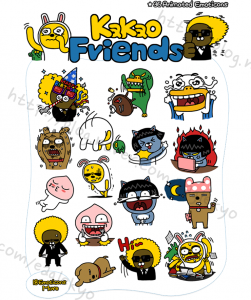As Internet and text messaging became viral, young people began to use innovating and unrecognizable expressions and txting languages to communicate. At first, as a linguistics major student, I felt that txting lingo and all those abbreviated letters are destroying not just English but languages in general just because it violates the standards to the extent that some texts are unrecognizable without an explanation. After reading Carrington’s article, his view on txting as a new genre that innovates and enriches language widened my perspective on this evolutionary change of expression. Yes, I agree that txting should be considered as a new form of communication as a cultivated mix of formal and informal language. Technology has brought this new form of language and according to some statistics, 95% of cell phone users between the age of 18 to 29 send text messages. However, texting is not even 20 years old and within this short period of time, this new form of language genre became extremely viral that even linguists feel threatened.
However, as Carrington points out himself, “there is also no room for an engagement with, or co-option of, new forms of text as they evolve around new technologies and social practices,” the language has a shifting trend without a policy or standard. This may help develop stylistic adaptations that account for the loss of socioemotional features, but at the same time, it can also cause communication error between people who use txting language and who do not. This I believe is the main reason for why older generations tend to regard txting language as a disease.
In Korea, there is a chat app namely KakaoTalk, which is similar to What’s App. The total number of registered users, as of April 2014, is 140 millions worldwide. From children to elderly, almost everyone in Korea use this app instead of using SMS text messaging. The app allows you to send pictures, videos, create a group chat, create a poll, calendar, voice call, and connect to personal blogs. On top of these functions, the app provides animated and vivacious emoticons. As Whitney mentioned in class, some people are evidently clever at using the perfect emoticons at the right situation. These emoticons are upgrades from what Facebook or special characters that smartphones already provide. I think the meanings are quite self-explanatory.
The app is not only used among young generation, but it also allows parents to communicate with children, teachers with students, businessmen with businessmen and even people who meet on craigslist communicate through KakaoTalk. Some people even post the screenshots of their conversations with others to tell stories. It has become such a powerful mean of communication and culture that no other form of language or text can allow us to do.
Part of the reason I believe is being able to express feelings and emotions that we were not able to convey through texts. We already have been through hundredfold of linguistic transformation throughout the ages. The problem is not only about txt language signifies a decline in language nor it evolving spoken language; but we should also focus on side effects. My only concern at the moment is how we can educate our students to differentiate between txt language and academic language. Not every teacher will be able to teach the difference unless they fully understand what txt language is.
Carrington, Victoria. “Txting: the end of civilization (again)?” Cambridge Journal of Education 35.2 (2005): 161-175. Web. 8 July 2014.


One reply on “Thoughts on txting”
I find it really interesting that you discuss the use of emoticons and Kakao’s ‘stickers’. There are so many unspoken rules of texting and most of the time, those who text are left to decipher messages and the ‘real’ meaning behind the words, punctuation and emoticons used in a text. In addition to this, there is also the amount of time between each text and what that means. It is quite easy to misinterpret a message in a text and I agree that it is hard to express feelings and emotions in this format.
The issue of whether or not txt language is killing the English language was something I thought a lot about during practicum. Would I accept an answer that showed understanding of content but used txt language or hashtags etc? After Carrington’s article I do agree that it is letting students know when to use an appropriate register. At the same time, I do not think txt language will replace academic language, since it is not really ‘writing’ but rather fingered speech and after understanding this, I changed my view on the ‘evil’ txt language.
(http://www.ted.com/talks/john_mcwhorter_txtng_is_killing_language_jk)
I do not think that students should eliminate txt language or stop engaging in it at all. Although it is demonized, it is a literacy that I believe students should learn and use as a new way of writing that is growing and transforming. As educators, it can become a source of building connections from literacies that our students are familiar with.